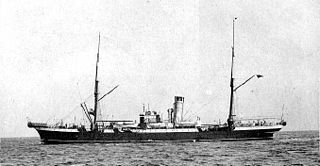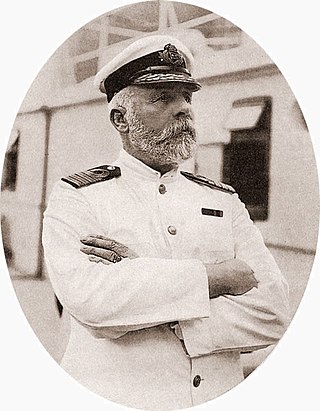Related Research Articles

The Canadian Coast Guard is the coast guard of Canada. Formed in 1962, the coast guard is tasked with marine search and rescue (SAR), communication, navigation, and transportation issues in Canadian waters, such as navigation aids and icebreaking, marine pollution response, and support for other Canadian government initiatives. The Coast Guard operates 119 vessels of varying sizes and 23 helicopters, along with a variety of smaller craft. The CCG is headquartered in Ottawa, Ontario, and is a special operating agency within Fisheries and Oceans Canada.

A deep-submergence vehicle (DSV) is a deep-diving crewed submersible that is self-propelled. Several navies operate vehicles that can be accurately described as DSVs. DSVs are commonly divided into two types: research DSVs, which are used for exploration and surveying, and DSRVs, which are intended to be used for rescuing the crew of a sunken navy submarine, clandestine (espionage) missions, or both. DSRVs are equipped with docking chambers to allow personnel ingress and egress via a manhole.

A cable layer or cable ship is a deep-sea vessel designed and used to lay underwater cables for telecommunications, electric power transmission, military, or other purposes. Cable ships are distinguished by large cable sheaves for guiding cable over bow or stern or both. Bow sheaves, some very large, were characteristic of all cable ships in the past, but newer ships are tending toward having stern sheaves only, as seen in the photo of CS Cable Innovator at the Port of Astoria on this page. The names of cable ships are often preceded by "C.S." as in CS Long Lines.

AS-28 is a Priz-class deep-submergence rescue vehicle of the Russian Navy, which entered service in 1986. It was designed for submarine rescue operations by the Lazurit Design Bureau in Nizhny Novgorod. It is 13.5 m (44 ft) long, 5.7 m (19 ft) high, and can operate up to a depth of 1,000 m (3,300 ft).

CCGS Sir Wilfred Grenfell is a Canadian Coast Guard vessel based in Victoria, British Columbia. Designated an "Offshore Ice Strengthened Multi Patrol Vessel", the former offshore supply vessel is named after the medical missionary in Labrador, Sir Wilfred Grenfell. Constructed in 1984–1985, Sir Wilfred Grenfell was purchased by the Canadian Government and converted for Coast Guard service. In 1994, she played an important role in the fishing conflict known as the Turbot War in the Atlantic Ocean.

The Canadian Coast Guard Auxiliary is a Canada-wide volunteer marine association dedicated to marine search and rescue (SAR) and the promotion of boating safety, through association with the Canadian Coast Guard under the auspices of Canada's National Search and Rescue Program.

The Cable Ship Mackay-Bennett was a transatlantic cable-laying and cable-repair ship registered at Lloyd's of London as a Glasgow vessel but owned by the American Commercial Cable Company. It is notable for being the ship that recovered the majority of the bodies after the sinking of the Titanic.

CSS Acadia is a former hydrographic surveying and oceanographic research ship of the Hydrographic Survey of Canada and its successor the Canadian Hydrographic Service.

Pisces-class submersibles are three-person research deep-submergence vehicles designed and built by Hyco International Hydrodynamics of North Vancouver in British Columbia with a maximum operating depth of 2,000 m (6,560 ft). The vehicles have multiple view ports and sample collecting, environmental sensing, and instrument placement capabilities. The pressure hull has a 7 ft (2.1 m) inside diameter and is made of HY-100 steel with three forward-looking acrylic windows, 6 in (15 cm) in diameter. Designed by Allan Trice, the Pisces series of submersibles were representative of crewed submersibles built in the late 1960s and were proven workhorses in offshore exploration and oceanographic research. Pisces II was the first production model of the design and was completed in 1968, with nine more Pisces submarines built before the manufacturer went out of business in the late 1970s.

CURV-III was the fourth generation of the United States Navy Cable-controlled Undersea Recovery Vehicle (CURV). CURV was a prototype for remotely operated underwater vehicles and a pioneer for teleoperation. It became famous in 1966 when CURV-I was used to recover a hydrogen bomb from the floor of the Mediterranean Sea. In 1973, CURV-III performed the deepest underwater rescue in history when it rescued two men 1,575 feet (480 m) from the ocean surface who were stranded 76 hours in the submersible Pisces III with just minutes of air remaining. The CURV-III became known in the Great Lakes region in 1976 when it was used to survey the wreck of the SS Edmund Fitzgerald. CURV-21 is the current generation that replaced CURV-III.

CCGS Sir Humphrey Gilbert is a former Canadian Coast Guard light icebreaker and buoy tender that was later sold to a private owner and renamed Polar Prince. The ship entered service with the Department of Transport Marine Service in 1959 and transferred to the newly created Canadian Coast Guard in 1962, active until 2001. The icebreaker was sold to private interests in Newfoundland and renamed Polar Prince, sitting mostly idle until resold in 2009 to GTX Technology Canada Limited for service in the Arctic Ocean as a commercial icebreaker. In 2017, the vessel was temporarily rechristened Canada C3 and used for a high-profile voyage around Canada's three maritime coasts as part of the nation's 150th anniversary. In November 2021, the ship was purchased by Miawpukek Horizon Maritime Service Ltd, a joint venture between Horizon Maritime and the Miawpukek First Nation and chartered for educational and research expedition use.

CCGS Kopit Hopson 1752, formerly CCGS Edward Cornwallis, is a Martha L. Black-class icebreaker of the Canadian Coast Guard. She serves as a light icebreaker and buoy tender on the East Coast of Canada. Entering service in 1986, the vessel is homeported at Dartmouth, Nova Scotia. The vessel was originally named after Lieutenant General Edward Cornwallis, a British Army officer and founding governor of Halifax, Nova Scotia. Due to the controversial history of the vessel's initial namesake, the ship was renamed in consultation with indigenous peoples, to commemorate Jean-Baptiste Cope under his Mi'kmaq name, British Governor Peregrine Hopson, and the year of the peace and friendship treaty created by former Governor Edward Cornwallis.

"The captain goes down with the ship" is a maritime tradition that a sea captain holds the ultimate responsibility for both the ship and everyone embarked on it, and in an emergency they will devote their time to save those on board or die trying. Although often connected to the sinking of RMS Titanic in 1912 and its captain, Edward Smith, the tradition precedes Titanic by several years. In most instances, captains forgo their own rapid departure of a ship in distress, and concentrate instead on saving other people. It often results in either the death or belated rescue of the captain as the last person on board.
The CS Chamarel, originally CS Vercors was a cable layer owned by France Telecom Marine, laying submarine communications cables around the world. It was built in 1974 and destroyed by a fire in August 2012. As the Vercors, the ship laid cables on and between all continents except Antarctica, including numerous trans-Atlantic cables and the first ever Israeli-made cable, and set the record for the deepest submarine buried cable lay in 2000. The ship was badly damaged by a fire and driven aground on 8 August 2012.
On 18 June 2023, Titan, a submersible operated by American tourism and expeditions company OceanGate, imploded during an expedition to view the wreck of the Titanic in the North Atlantic Ocean off the coast of Newfoundland, Canada. On board the submersible were Stockton Rush, the American CEO of OceanGate; Paul-Henri Nargeolet, a French deep-sea explorer and Titanic expert; Hamish Harding, a British businessman; Shahzada Dawood, a Pakistani-British businessman; and Dawood's son Suleman.
CCGS John Cabot is a Canadian Coast Guard offshore fisheries research ship. The vessel was constructed in 2020 by Vancouver Shipyards, operated by Seaspan Shipyards, in North Vancouver, British Columbia. It is named after John Cabot, an Italian explorer. John Cabot's home port is St. John's, Newfoundland and Labrador.
CCGS John Cabot is the name of two ships of the Canadian Coast Guard, honouring the Italian explorer John Cabot.
CCGS John Cabot was a Canadian Coast Guard heavy icebreaker and cable ship in service starting 1965. It passed out of CCG service and entered private service in 1994, as the cable ship CS John Cabot. In 1997, it was again renamed, becoming CS Certamen. The ship was scrapped in 2014, under the name Certa. It was the world's first icebreaking cable repair ship built. In 1985, it recovered the black boxes from Air India Flight 182. As of 2023, the John Cabot participated in the deepest submarine rescue ever performed, in 1973, retrieving Pisces III from the seafloor at 480 m (1,570 ft) and rescuing the crew of Roger Mallinson and Roger Chapman.
References
- ↑ "Liberty Ships built by the United States Maritime Commission in World War II". usmm.org. American Merchant Marine at War. 4 May 2002.
- ↑ Department of Fisheries and Oceans. "CCG Fleet: Vessel Details - CCGS JOHN CABOT". Government of Canada. Retrieved 23 June 2023.
- ↑ Helen Regan; Adam Renton; Rob Picheta; Aditi Sangal; Elise Hammond; Matt Meyer; Tori B. Powell; Maureen Chowdhury (23 June 2023). "Missing Titanic sub crew killed after 'catastrophic implosion'". CNN.
- ↑ Maritime History Archive (2005). ""John Cabot" (Ship) at St. John's, Newfoundland". Maritime History Archive Public Photo Catalogue. Memorial University. PF-055.2-D40.
- ↑ Bill Glover (9 April 2021). "CCGS John Cabot / CS Certamen". Atlantic Cable: History of the Atlantic Cable & Undersea Communications.
- ↑ Rebecca Sayce (21 June 2023). "What is the deepest undersea rescue ever and how does it compare to missing Titanic sub?". London, UK: Metro.